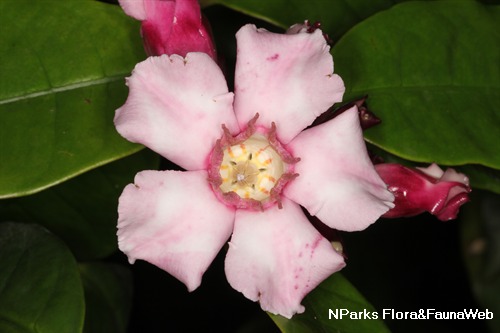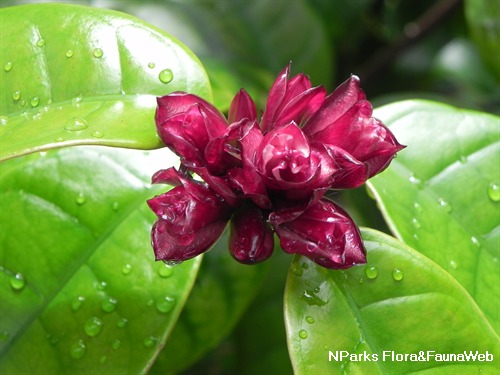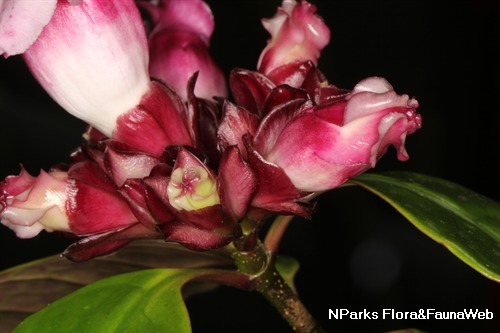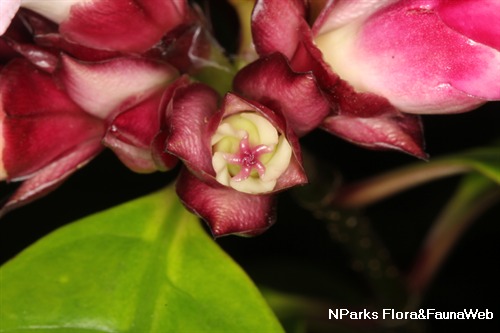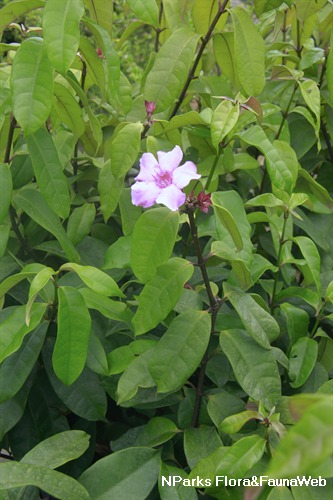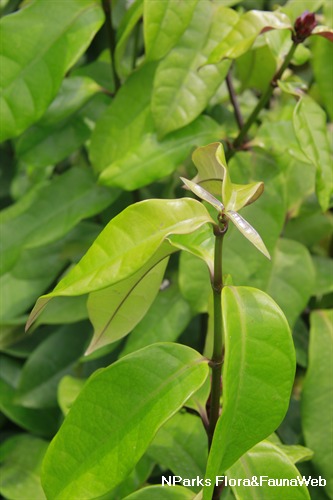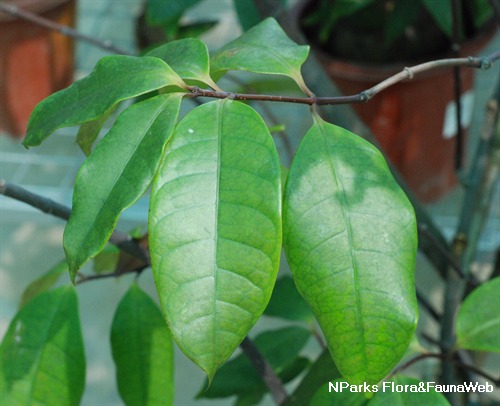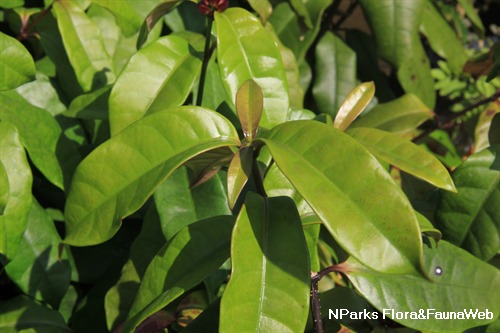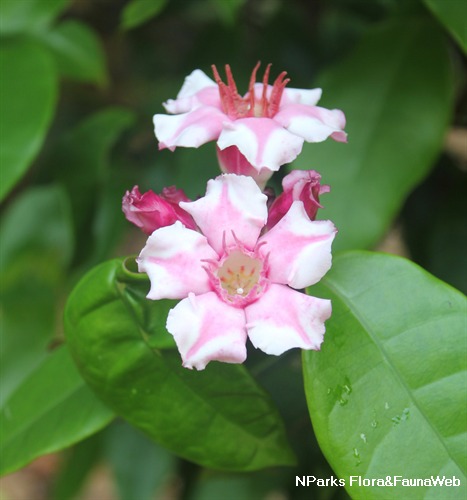
Back
Strophanthus gratus
| Family Name: | Apocynaceae |
| Synonyms: | Nerium guineense |
| Common Name: | Cream Fruit, Climbing Oleander, Indian Rubber Vine, Strofantus Ungu |
Name
Classifications and Characteristics
| Plant Growth Form | Shrub |
|---|
Biogeography
| Native Distribution | West Tropical Africa |
|---|
Description and Ethnobotany
| Growth Form | A woody vine which can reach a height of 25m, it can also be grown as a sarmentose shrub. |
|---|---|
| Foliage | The leaves are simple and glabrous. |
| Stems | The branches are dark coloured, glabrous and lenticillate. |
| Flowers | The flowers are borne on terminal cymes. The bisexual flowers have 5-lobed light pink petals and are fragrant. |
| Fruit | The fruits are divergent follicles, connate at the base. |
| Habitat | It can be found in primary and secondary forests, often at forest margins and thickets from sea level to an altitude of 650m. |
| Ethnobotanical Uses | Medicinal: The leaves are used in Africa as a folk medicine against snakebite. The plant contains cardiac glycosides or ouabin which is extracted from the seed and used in pharmaceuticals in Europe as a rapid cardiac stimulant. Others: The seeds and latex are used to to poison arrows in Africa. When an animal is killed in such a way, the flesh around the wound should be cut away and discarded but is otherwise safe to eat. |
Landscaping Features
| Desirable Plant Features | Ornamental Flowers, Fragrant (Flowers) |
|---|---|
| Landscape Uses | Parks & Gardens, Trellis / Arbour / Pergola |
| Usage Hazard - Cons | Toxic Upon Ingestion |
Plant Care and Propagation
| Light Preference | Full Sun |
|---|---|
| Water Preference | Moderate Water |
| Propagation Method | Seed, Stem Cutting |
Foliar
| Mature Foliage Colour(s) | Green |
|---|---|
| Leaf Area Index (LAI) for Green Plot Ratio | 4.5 (Shrub & Groundcover - Dicot) |
Floral (Angiosperm)
| Flower Colour(s) | Pink, Red |
|---|
Image Repository
Others
| Master ID | 1191 |
|---|---|
| Species ID | 2484 |
| Flora Disclaimer | The information in this website has been compiled from reliable sources, such as reference works on medicinal plants. It is not a substitute for medical advice or treatment and NParks does not purport to provide any medical advice. Readers should always consult his/her physician before using or consuming a plant for medicinal purposes. |

